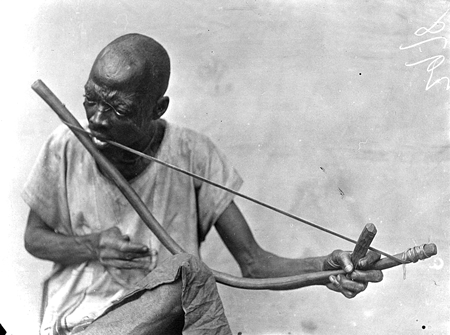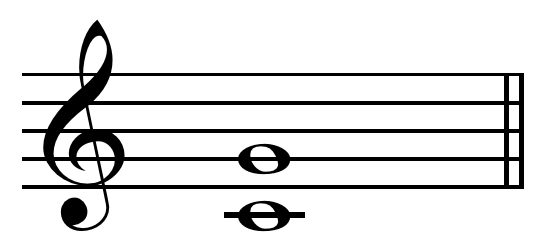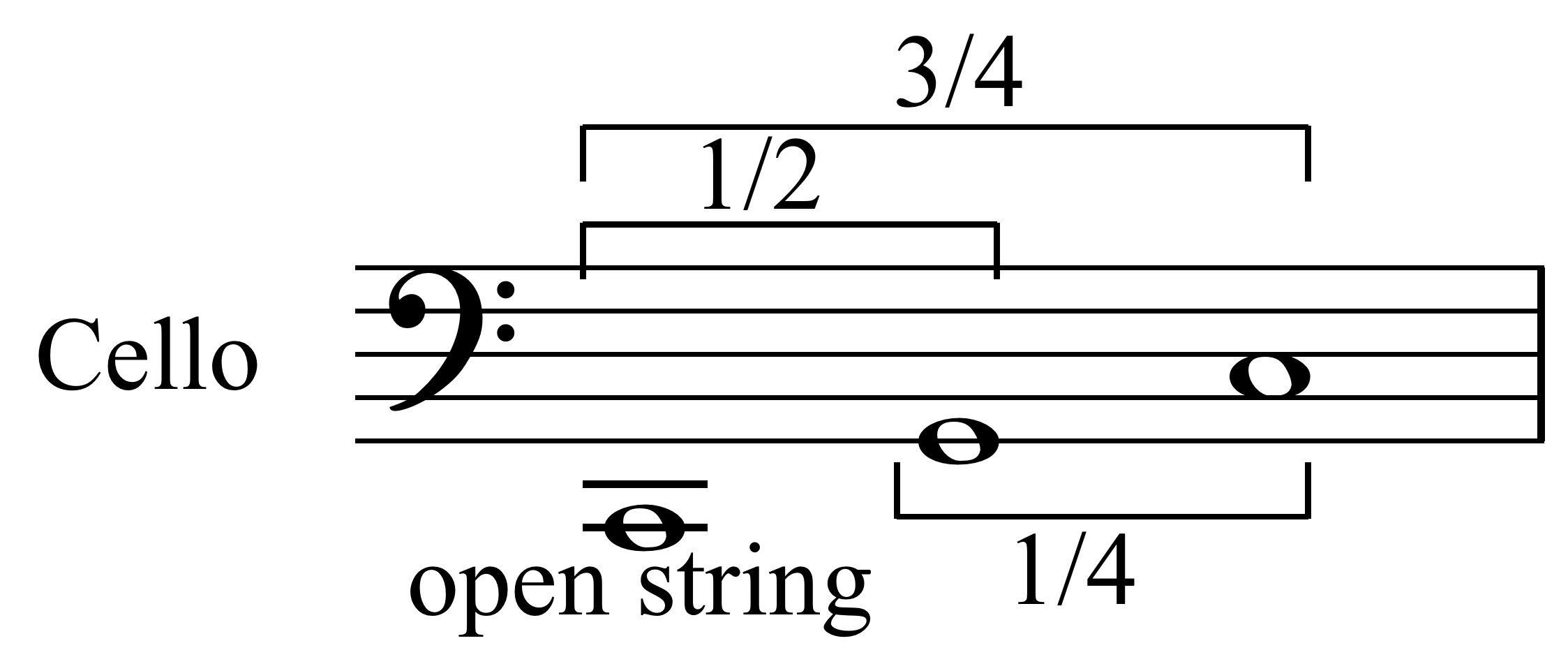|
Umuduri
The umuduri is a Burundian and Rwandan stringed instrument. It is a musical bow consisting of a string supported by a flexible wooden string bearer or bow that is 125–135 cm in length. The string is traditionally made from plant fiber and animal gut. However, metal wire is becoming widespread. Construction and design A gourd is attached to the bow to act as a resonator. A wooden stick and the inzebe rattle are also used. Two loops bring the string closer to the bow, the third (attached to the gourd resonator by a cord) divides the string into two unequal lengths. This creates two different notes, usually a fourth or a fifth, as fundamental notes. To keep the resonator and the musical bow apart, a cloth or a pad of banana peel is placed between the two to ensure that there is no direct contact between the bow and the gourd that might interfere with production of sound. Playing technique To play the instrument, the bow is held in the left hand vertically in front of the bo ... [...More Info...] [...Related Items...] OR: [Wikipedia] [Google] [Baidu] |
Musical Bow
The musical bow (bowstring or string bow, a subset of bar zithers) is a simple string instrument used by a number of South African peoples, which is also found in the Americas via slave trade. It consists of a flexible, usually wooden, stick 1.5 to 10 feet (0.5 to 3 m) long, and strung end to end with a taut cord, usually metal. It can be played with the hands or a wooden stick or branch. It is uncertain if the musical bow developed from the hunting bow, though the San or Bushmen people of the Kalahari Desert do convert their hunting bows to musical use. Types of bow include mouth-resonated string bow, earth-resonated string bow, and gourd-resonated string bow. History There is speculation that the hunting bow may have been used as a musical instrument from as early as circa 13,000 B.C. Henri Breuil surveyed the Trois Frères in France caves and made an engraving that attempted to reproduce a c. 13,000 B.C. cave painting into a black-and-white lithograph engraving ... [...More Info...] [...Related Items...] OR: [Wikipedia] [Google] [Baidu] |
String Instrument
String instruments, stringed instruments, or chordophones are musical instruments that produce sound from vibrating strings when a performer plays or sounds the strings in some manner. Musicians play some string instruments by plucking the strings with their fingers or a plectrum—and others by hitting the strings with a light wooden hammer or by rubbing the strings with a bow. In some keyboard instruments, such as the harpsichord, the musician presses a key that plucks the string. Other musical instruments generate sound by striking the string. With bowed instruments, the player pulls a rosined horsehair bow across the strings, causing them to vibrate. With a hurdy-gurdy, the musician cranks a wheel whose rosined edge touches the strings. Bowed instruments include the string section instruments of the orchestra in Western classical music (violin, viola, cello and double bass) and a number of other instruments (e.g., viols and gambas used in early music from the Baro ... [...More Info...] [...Related Items...] OR: [Wikipedia] [Google] [Baidu] |
Perfect Fifth
In music theory, a perfect fifth is the Interval (music), musical interval corresponding to a pair of pitch (music), pitches with a frequency ratio of 3:2, or very nearly so. In classical music from Western culture, a fifth is the interval from the first to the last of five consecutive Musical note, notes in a diatonic scale. The perfect fifth (often abbreviated P5) spans seven semitones, while the Tritone, diminished fifth spans six and the augmented fifth spans eight semitones. For example, the interval from C to G is a perfect fifth, as the note G lies seven semitones above C. The perfect fifth may be derived from the Harmonic series (music), harmonic series as the interval between the second and third harmonics. In a diatonic scale, the dominant (music), dominant note is a perfect fifth above the tonic (music), tonic note. The perfect fifth is more consonance and dissonance, consonant, or stable, than any other interval except the unison and the octave. It occurs above the ... [...More Info...] [...Related Items...] OR: [Wikipedia] [Google] [Baidu] |
Central African Republic Musical Instruments
Central is an adjective usually referring to being in the center of some place or (mathematical) object. Central may also refer to: Directions and generalised locations * Central Africa, a region in the centre of Africa continent, also known as Middle Africa * Central America, a region in the centre of America continent * Central Asia, a region in the centre of Eurasian continent * Central Australia, a region of the Australian continent * Central Belt, an area in the centre of Scotland * Central Europe, a region of the European continent * Central London, the centre of London * Central Region (other) * Central United States, a region of the United States of America Specific locations Countries * Central African Republic, a country in Africa States and provinces * Blue Nile (state) or Central, a state in Sudan * Central Department, Paraguay * Central Province (Kenya) * Central Province (Papua New Guinea) * Central Province (Solomon Islands) * Central Province, Sri Lank ... [...More Info...] [...Related Items...] OR: [Wikipedia] [Google] [Baidu] |
Music Of Rwanda
The music of Rwanda encompasses Rwandan traditions of folk music as well as contemporary East African Afrobeat and Congolese ndombolo, and performers of a wide variety of Western genres including hip-hop, R&B, gospel music and pop ballads. Traditional music Traditional music and dance are taught in "amatorero" dance groups, which are found across the country. The most famous of these is the Ballet National Urukerereza, which was created in the early 1970s to represent Rwanda in international events. Also famous were the Amasimbi n'amakombe and Irindiro dance troupes. The ikinimba is perhaps the most revered musical tradition in Rwanda. It is a dance that tells the stories of Rwandan heroes and kings, accompanied by instruments like ngoma, ikembe, iningiri, umuduri and inanga. The inanga, a lyre-like string instrument, has been played many of Rwanda's best-known performers, including Rujindiri, Sebatunzi, Rwishyura, Simparingoma, Sentoré, Kirusu, Sophie and Viateur Kaba ... [...More Info...] [...Related Items...] OR: [Wikipedia] [Google] [Baidu] |
Ikembe
Ikembe, is a type of musical instrument of the lamellaphone group, common amongst the people of Rwanda, Burundi and the Congo. The instrument consists of several iron lamellae, fixed to a rectangular wooden soundbox. In Swahili the word imba means song. Kuimba means to sing, as in the phras"nitakwenda kuimba"(I go to sing). Swahili, as in many languages, uses a type of binomial nomenclature to create new words to describe unfamiliar or new objects, occurrences or people, based on existing words or concepts. By combining part of the word for mother = ma with the word for song = imba using r as a connector we come up with the word marimba = mother of song. We can then extrapolate from the research of A.M. Jones, quoted by Osborne that ka = small combined with the word imba = song should mean little mother of song. Osborne cites examples of various names for these mbira from all over the continent, which have the Swahili word for song as their root. Admittedly, Swahili, like Engl ... [...More Info...] [...Related Items...] OR: [Wikipedia] [Google] [Baidu] |
Hutu
The Hutu (), also known as the Abahutu, are a Bantu ethnic or social group which is native to the African Great Lakes region. They mainly live in Rwanda, Burundi and the eastern Democratic Republic of the Congo, where they form one of the principal ethnic groups alongside the Tutsi and the Great Lakes Twa. Demographics The Hutu is the largest of the three main population divisions in Burundi and Rwanda. Prior to 2017, the CIA World Factbook stated that 84% of Rwandans and 85% of Burundians are Hutu, with Tutsis being the second largest ethnic group at 15% and 14% of residents of Rwanda and Burundi, respectively. However, these figures were omitted in 2017 and no new figures have been published since then. The Twa pygmies, the smallest of the two countries' principal populations, share language and culture with the Hutu and Tutsi. They are distinguished by a considerably shorter stature. Origins The Hutu are believed to have first emigrated to the Great Lake re ... [...More Info...] [...Related Items...] OR: [Wikipedia] [Google] [Baidu] |
Sound
In physics, sound is a vibration that propagates as an acoustic wave, through a transmission medium such as a gas, liquid or solid. In human physiology and psychology, sound is the ''reception'' of such waves and their ''perception'' by the brain. Only acoustic waves that have frequencies lying between about 20 Hz and 20 kHz, the audio frequency range, elicit an auditory percept in humans. In air at atmospheric pressure, these represent sound waves with wavelengths of to . Sound waves above 20 kHz are known as ultrasound and are not audible to humans. Sound waves below 20 Hz are known as infrasound. Different animal species have varying hearing ranges. Acoustics Acoustics is the interdisciplinary science that deals with the study of mechanical waves in gasses, liquids, and solids including vibration, sound, ultrasound, and infrasound. A scientist who works in the field of acoustics is an ''acoustician'', while someone working in the field of acoustica ... [...More Info...] [...Related Items...] OR: [Wikipedia] [Google] [Baidu] |
Fundamental (music)
The fundamental frequency, often referred to simply as the ''fundamental'', is defined as the lowest frequency of a periodic waveform. In music, the fundamental is the musical pitch of a note that is perceived as the lowest partial present. In terms of a superposition of sinusoids, the fundamental frequency is the lowest frequency sinusoidal in the sum of harmonically related frequencies, or the frequency of the difference between adjacent frequencies. In some contexts, the fundamental is usually abbreviated as 0, indicating the lowest frequency counting from zero. In other contexts, it is more common to abbreviate it as 1, the first harmonic. (The second harmonic is then 2 = 2⋅1, etc. In this context, the zeroth harmonic would be 0 Hz.) According to Benward's and Saker's ''Music: In Theory and Practice'': Explanation All sinusoidal and many non-sinusoidal waveforms repeat exactly over time – they are periodic. The period of a waveform is the smallest value of T ... [...More Info...] [...Related Items...] OR: [Wikipedia] [Google] [Baidu] |
Perfect Fourth
A fourth is a musical interval encompassing four staff positions in the music notation of Western culture, and a perfect fourth () is the fourth spanning five semitones (half steps, or half tones). For example, the ascending interval from C to the next F is a perfect fourth, because the note F is the fifth semitone above C, and there are four staff positions between C and F. Diminished and augmented fourths span the same number of staff positions, but consist of a different number of semitones (four and six, respectively). The perfect fourth may be derived from the harmonic series as the interval between the third and fourth harmonics. The term ''perfect'' identifies this interval as belonging to the group of perfect intervals, so called because they are neither major nor minor. A perfect fourth in just intonation corresponds to a pitch ratio of 4:3, or about 498 cents (), while in equal temperament a perfect fourth is equal to five semitones, or 500 cents (see additive s ... [...More Info...] [...Related Items...] OR: [Wikipedia] [Google] [Baidu] |
Chordophone
String instruments, stringed instruments, or chordophones are musical instruments that produce sound from vibrating strings when a performer plays or sounds the strings in some manner. Musicians play some string instruments by plucking the strings with their fingers or a plectrum—and others by hitting the strings with a light wooden hammer or by rubbing the strings with a bow. In some keyboard instruments, such as the harpsichord, the musician presses a key that plucks the string. Other musical instruments generate sound by striking the string. With bowed instruments, the player pulls a rosined horsehair bow across the strings, causing them to vibrate. With a hurdy-gurdy, the musician cranks a wheel whose rosined edge touches the strings. Bowed instruments include the string section instruments of the orchestra in Western classical music (violin, viola, cello and double bass) and a number of other instruments (e.g., viols and gambas used in early music from the Baroque ... [...More Info...] [...Related Items...] OR: [Wikipedia] [Google] [Baidu] |
Note (music)
In music, a note is the representation of a musical sound. Notes can represent the pitch and duration of a sound in musical notation. A note can also represent a pitch class. Notes are the building blocks of much written music: discretizations of musical phenomena that facilitate performance, comprehension, and analysis. The term ''note'' can be used in both generic and specific senses: one might say either "the piece 'Happy Birthday to You' begins with two notes having the same pitch", or "the piece begins with two repetitions of the same note". In the former case, one uses ''note'' to refer to a specific musical event; in the latter, one uses the term to refer to a class of events sharing the same pitch. (See also: Key signature names and translations.) Two notes with fundamental frequencies in a ratio equal to any integer power of two (e.g., half, twice, or four times) are perceived as very similar. Because of that, all notes with these kinds of relations can be groupe ... [...More Info...] [...Related Items...] OR: [Wikipedia] [Google] [Baidu] |






